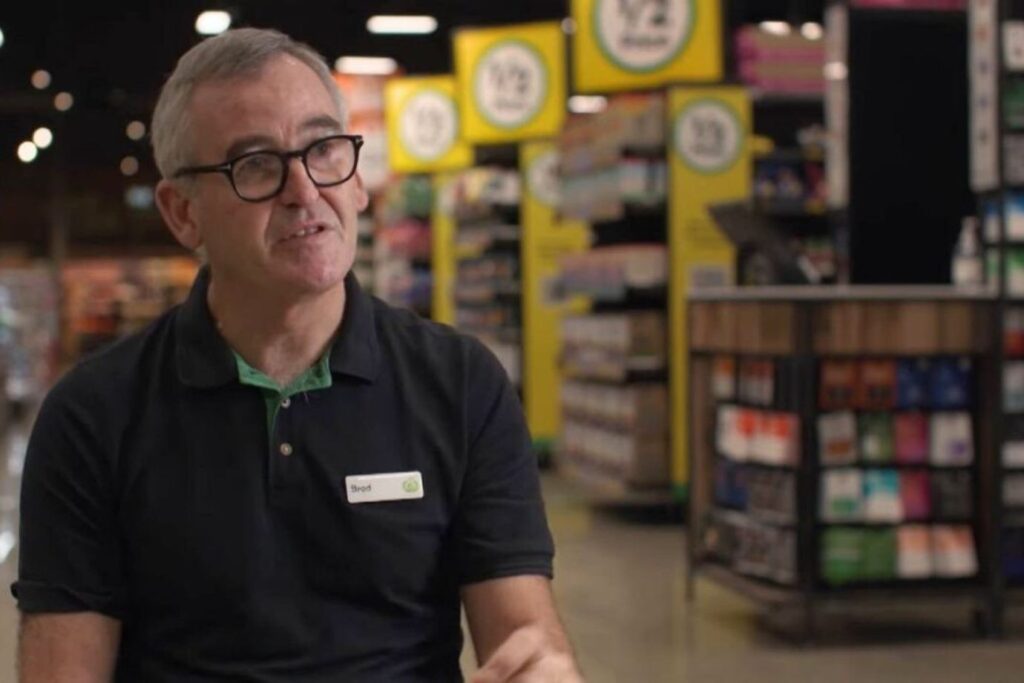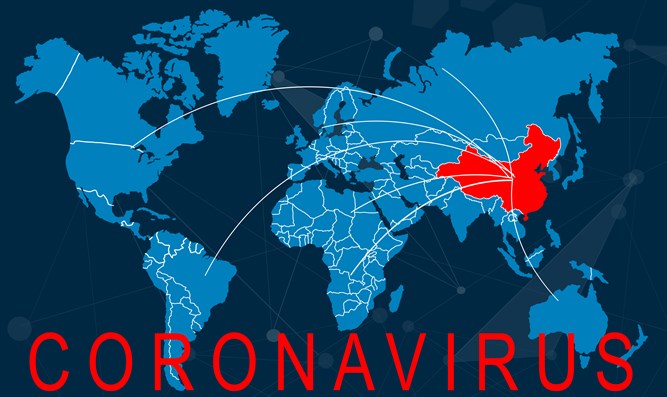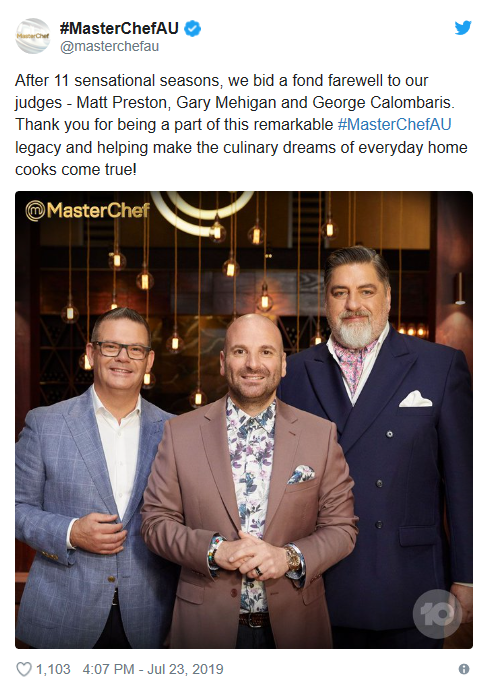-
The Importance of Media Training: Woolworths and 4 Corners
The now infamous 4 corners interview with Woolworths CEO Brad Banducci earlier this week, serves as a reminder to all senior executives across industry, institutions and the professions, that being properly prepared for media interviews is critical.
An interview with 4 Corners was never going to be an easy going, friendly chat, so Banducci should have fully expected penetrating questions and a full interrogation. In fact, I advise execs to prepare for tough questions even if the interview is positioned as a friendly feature.
If you say yes to an interview, put the time n to prepare. Not only to get your facts ready, but to get your mindset right. At KDPR we put clients through a rigorous interview session ahead of key interview opportunities such as this. Prep them for a worst-case scenario. That way, my clients are ready for anything, and know how to manage the situation in lieu of walking out, which of course then becomes the headline. It pays to have a formal journalist as your media trainer, to properly put you through your paces.
Explore media training at KDPR here.
-
What does PR look like in 2021?
Genuine content
People are seeking authentic, genuine content and a more ‘behind-the-scenes’ look at businesses. Consumers look to support local and small businesses that provide an authentic view into how they operate, who they are, and their values.
Social media has become the easiest and most personal way to connect with audiences. When lockdown restrictions halted trade, closed stores, and shut down events, genuine, behind-the-scenes content helped brands become more than a provider of goods and services and establish meaningful relationships with their customers.
Communications success in 2021 for larger companies means sharing truth, facts, and education. The industry has already shifted towards championing these communications strategies, and prioritising campaigns around authenticity and transparency. We will see this continue to grow with companies putting more resources into authentic communications strategies and fostering genuine connection with their audiences.
Creative and flexible strategies
2021 will provide the perfect springboard to find new ways of connecting with stakeholders and consumers. Even though parts of life here in Australia are starting to resemble the ‘Before COVID’ era, we now have the opportunity to rethink how to get materials to wider audience in any environment.
We have created platforms and technologies that will allow us to explore new opportunities and create experiences across a wide range of technology types. In-person events are still valuable, but it is necessary to deliver just as valuable of an experience virtually.
Having seen how quickly new policies and movement restrictions can come into play, a creative and flexible plan A will serve you better than having many alternative plan Bs. Communications professionals should consider all possibilities when developing that plan. Embrace technology, have options for all audiences, and set frameworks that allow you to adapt the strategy at a moments notice.
New ways to reach audiences
‘Thinking outside the box’ starts with the question: where is your audience? Media coverage is a core activity of PR but is not always the best way to reach and meaningfully engage audiences.
Beyond traditional publicity, platforms like podcasts, panel discussions, and webinars offer opportunities to expand your reach and enhance your credibility. Creative activations and guerrilla marketing can do wonders for brand voice and storytelling. Offering virtual and in-person opportunities to access any events or thought-leadership significantly expands your engagement.
Being able to understand the potential of your strategies and reach will see the communications industry to evolve – and allow your business to remain connected to your audience, no matter where they are.
-
The Future of the Workforce
The COVID-19 pandemic has been an unprecedented experiment for the modern workplace, with the we way both live and work drastically challenged by restrictions. Many employees have long called for more flexible work arrangements, whether to accommodate carer duties, working parents, or work-life balance. The post-pandemic world presents an opportunity to implement on a large scale what was once a radical, progressive approach to work routine – and is now a widely praised model of thriving workplace culture.
Today is Flexible Working Day, an international day to celebrate and showcase the benefits of flexible work for both people and organisations. KDPR has embraced the WFH lifestyle and is lucky to be in an industry that allowed us to easily adapt when the pandemic restrictions first instructed much of the workforce to stay at home. We have seen firsthand how flexible working systems have helped our team, our clients, and our community to increase their productivity and improve their work-life balance. The ability to work on projects from the comfort of home has proven to improve workforce mental health.
We recently wrote an article on authentic and transparent leadership, and how the pandemic provides the opportunity to reflect on management best practice – including a stronger focus on tangible outcomes and deliverables rather than just turning up. Management has evolved from a top-down hierarchy, with workplaces forced to adopt less of a micro-managerial model and more employee autonomy. The environment of online work has borne a leadership style that places more emphasis on employee satisfaction, autonomy, and growth.
We understand that for some, face-to-face engagement and team environments are necessary tools for effective collaboration. Meetings and strategising with colleagues and clients are still beneficial ways to align and inform, but the ability to choose is the most beneficial tool of all. There is no one way to work, but rather a multi-pronged approach that is rooted in flexibility, with the critical component of employee choice.
Today, on Flexible Working Day, we are showing our support for formalizing flexible work arrangements and are excited to see how the very fabric of our working society adapts to a post-COVID world.
-
Planning your COVID-19 recovery
Many businesses have been busy with the process of surviving through the pandemic, but some are starting to prepare for recovery post-coronavirus crisis. There is no way of knowing what the world will look like on the other side, but this time presents the perfect opportunity to strategise and work on a plan to best prepare for what is to come.
Some questions to consider:
What are you doing to be agile through this disruption?
How are you maintaining service, or are you offering new, innovative services?
There will be a lot of noise post-lockdown, so how will you achieve cut-through?
What are you putting in place now to ensure you are putting your best foot forward?
Right now, the number one priority is staying connected to your clients; your customers; your communities. It is so important to consistently communicate, not only to maintain engagement with your audience but also to broaden it.
Now is the perfect opportunity to refine and scale up your digital presence, because people are absorbing more news and social media content than ever before. Make significant efforts to put your messaging in front of your audience with relevant content, such as information, news they can use, infotainment, and positive reinforcements.
When looking to the future, it is wise to use this time to completely review your businesses communications position. Does your branding need a post virus fresh, clean and disinfected look? Brand refreshes can be simple, cosmetic changes or complete makeover projects, and should consider websites, digital platforms and all marketing materials.
Consider your business narrative, position and desired outcomes, conduct a communications audit and take this opportunity to completely refresh your communications strategy. There may be tactics or tools you never had the time to explore before – for instance, you may have always wanted to introduce video to your communications mix but never had the time to get around to it.
Your business agility is your unique story – people want to hear how individuals and organisations are responding, giving hope through these challenging times. Do you have a media story about how your business is responding in the COVID-19 crisis? Getting that story in front journalists can be a vital and the most relevant tool to broaden your reach through editorial and TV news, radio, newspapers, and digital publications.
If your business is experiencing downtime or is expecting to experience a significant business boom when health restrictions lift, you can use this lockdown period to dig deep and strategise for what is to come.
It may be unprecedented, but that doesn’t mean you have to be unprepared.
We are available for all communications projects, large or small, to assist you during this time of disruption and begin working with you on the best communications strategy for recovery post-coronavirus for whenever that time comes.
Let us help tell your story. Contact if you would like to get in touch.
-
A Communications Perspective on a Global Health Crisis
Over the past month, the world has been on edge with the shocking outbreak of the Coronavirus, a highly contagious, incurable respiratory illness that was first identified in Wuhan, Hubei Province, China. So far, there has been 24,557 confirmed cases and 492 deaths, with many people taking drastic measures to avoid risk of contamination. As a result of the virus’ severity, the World Health Organisation has declared the Coronavirus outbreak as a Public Health Emergency of International Concern (PHEIC), making the virus a highly relevant global news topic. As PR professionals, our job is to make use of the current news cycle to help our clients reach their publics. So, what can coronavirus teach us about this?
Remember your Brand’s Values
Firstly, it’s important to remember your brand’s values and identity when responding to any crisis. Doing this can help your brand respond to the crisis in a way that prioritises the business, its stakeholders and publics. If addressing the crisis at hand is either not relevant or could potentially harm the reputation of your brand, it’s a good idea to refrain from taking any action and to instead wait and see if the situation gains any relevance to the brand. On the other hand, if the health crisis is impacting your business such as disrupting supply chain or affecting business partners, it is wise to remain transparent and realistic with your stakeholders.
Consider Tone of Voice
When it comes to PR, tone of voice is incredibly important in order to get across the right message, even when all of your information is correct. In the event of a crisis, brands should aim to have an empathetic, yet educational tone of voice that expresses the severity of the situation while refraining from scaring their publics. Using this neutral, yet slightly optimistic tone of voice avoids sensationalism and allows your publics to associate their feelings of safety with your brand’s response to the crisis.
Corporate Social Responsibility
Regardless of whether there is a crisis, Corporate Social Responsibility (CSR) should be a consideration to show their commitment to improving social and environmental issues internally and externally. If your brand is yet to take on a CSR initiative, it may be suitable to use a timely event, such as Coronavirus to take advantage of the news cycle and cleverly place your brand in the spotlight. There are a number of brands who have committed to sharing funds to help China fight the virus and in turn, they have received some positive recognition.
Check your Facts
While it may seem obvious, it’s always highly important to fact check any information you’re putting in a media release, blog or fact sheet to ensure you’re delivering the correct information to publics. Spreading false information could potentially lead to loss of trust, panic among publics and negative speculation. With so many articles circulating about a topic as notable as Coronavirus, it can be very easy to find false figures and facts that sensationalise the story. To avoid this happening, brands should only reference information sourced from Government or health organisations.
At KDPR, we specialise in issues and crisis management, as well as general PR services. To learn more about how we can assist you or your brand, contact us on 3136 2555
Words by Alex Lucey
-
Media Trends in 2020: How the industry is changing
As we enter the new decade, the media industry will be greatly influenced by changes in technology, platforms and trends that are rapidly reshaping the media landscape. The industry is constantly in a period of accelerating change, but we have identified a few major trends that will greatly change the space that PR and media professionals operate in. These trends will provide new territories and opportunities for businesses to explore, and open new ways to communicate with audiences.
TECHNOLOGY
New technologies are continuously redefining the media landscape and the ways people communicate with brands, businesses, clients and the public. While augmented reality (AR) and artificial intelligence technologies have been emerging in the industry over the last decade, they will scale and influence consumers in new ways. We will see more innovative, useful, and immersive experiences being built by businesses embracing AR, such as creating interactive maps and layers to the existing world.
PLATFORMS
The rise of audio platforms will see more businesses publish audio content, integrate audio interactions to their owned platforms, and build an audio marketing presence. With the podcast industry increasingly gaining traction and smart speaker and smart home devices becoming more advanced, audio and voice-based digital interactions will become just as natural as tapping on a phone or streaming a video.
These advanced technologies are resulting in media platforms and communication channels becoming both more nuanced and more niche. The boundary between traditional and new media is blurring, with no longer a clear distinction between paid, owned, earned and shared media.
TRENDS
With visible like counts disappearing from popular social media platforms such as Facebook and Instagram, content creation will shift from trying to cultivate a mass following to creating ways to engage more meaningfully with audiences. This will see a rise in subscription-based content, interactive content and a more authentic profile.
The demand for authentic content is growing and the public is craving to see brands and businesses embrace transparency, social responsibility and authentic engagement.
2020 and beyond is set to be an exciting time in the media industry as these technologies and trends continue to develop and shape our experiences. These trends will help guide the narratives, strategy and services KDPR provides for our clients and as ever, enable us to help you navigate the media landscape and leverage these trends for your business.
-
KDPR’s Top Tips for Networking Novices
With the internet bringing all the information in the world to our fingertips, it’s never been easier to expand your business, reach new people and gain clients. Digital networking platforms such as LinkedIn make it simple to find specific, targeted connections, and building your business network can be done in a matter of minutes. Establishing connections online is second nature, but progressing the conversation further than the exchange of a few ‘likes’ is still as much of a challenge than ever. Conversation remains the most valuable tool in any businessperson’s arsenal, so make an effort to connect with people in real life, not just on socials.
Take the opportunity to network everywhere
Networking opportunities are everywhere, from your local coffee shop to awards ceremonies to large-scale conferences. You never know who you will meet in the most unlikely of places, so be prepared with business cards and your best handshake next time you go to your local.
However, you shouldn’t wait for such opportunities to come to you – be proactive at seeking out networking events. Industry networking events are the most beneficial and the most enjoyable because they bring the community together for a productive discussion about an industry relevant issue. This provides an excellent talking point for your networking conversations and offers a fantastic learning experience from your business peers and the wider community.
Don’t forget to talk about you
Networking mentality tends to focus on what other people and businesses have done, or what they can do for you. It’s more valuable to emphasise what you and your business can do for them. Networking can be more than just collecting a bunch of business cards to use later down the track. Let this be an opportunity to convey the excellent work your business has done and the innovative strides you have taken to make it happen.
Now do it!
Bring your team to the next relevant networking event and show off the great projects you and your company are responsible for, learn from the innovations of others, and watch your business network with other industry professionals grow.
Upcoming networking events:
The American Chamber of Commerce (AmCham) inaugural Corporate Social Responsibility Gala Dinner will be a great way to converse with other business leaders, while learning innovative ways to incorporate CSR into your own organisation and also celebrating the achievements of the AmCham business community at large.
When: Thursday 7 November, 2019
Time: 7pm – 11pm
Where: W Brisbane, 81 North Quay, Brisbane, QLD 4000
More information: https://www.amcham.com.au/Web/AmCham/Events/Event_Display.aspx?EventKey=040060 -
PR lessons from Woolworths’ Collectables
Supermarket chain collectables such as Coles’ little shop and Woolworths’ Ooshies have proven to be successful with the public, with families loving the collectable and kitschy toy giveaways that have turned the once-dreaded trip to the grocery store into an exciting family outing. Families have even gone so far as to buy and sell rare collectables online for thousands of dollars!
However, both Coles and Woolworths received much public backlash for their mass plastic waste in these schemes as they launched shortly after the supermarket chains supported the nationwide elimination of single-use plastic bags in stores.
In an attempt to restore their public image, a few weeks ago Woolworths revealed a new collectable promotion called ‘Discovery Garden’, where herb and flower seedlings grown in mini pots are the collectable elements. From a PR perspective, the upcoming campaign is a great move for the company.
Here’s what we can learn from Woolworths’ decision to go plant instead of plastic:
Listen to your publics
Despite the collectable craze, a large number of parents have boycotted the giveaway schemes as public angst on plastic waste continues to grow. There was an angry sentiment among the public, branding the Ooshies campaign as reckless, with a majority of the plastic toys expected to end up as landfill. This overtook Woolworths’ social media and the sentiment was seconded in the mainstream media. By making the switch to a more sustainable collectable, Woolworths have demonstrated that they not only listen to feedback from the public, but they actually do something about it.
Building on the hype of an already successful scheme and but making it more nuanced in accordance with public advice will always give you success.
Corporate Social Responsibility
Now more than ever, publics are choosing organisations based on their perceived brand values and ethics. Publics are demanding transparency, sustainability and social responsibility from places they work, shop, play and live. Corporate social responsibility is a growing concept in the PR industry; it’s about building brand equity beyond lawfulness and profit-making. Woolworth’s move from plastic to plants is a reaction to the ever-growing public awareness of wastage and sustainability in Australia – and it came at just the right time. The sustainable alternative to the Ooshies campaign shows Woolworths to be environmentally responsible for the actions – a huge step in the right direction as far as the public is concerned.
Build on the hype with strategic planning
The supermarkets got it right – families loved the concept of having a children’s incentive to make the grocery shop just that little bit easier. Children and parents alike went crazy, so the media did as well. Every media mention is an opportunity to accrue value for your organisation’s brand. Key messaging, timing and use of all platforms should be considered when your organisation is in the limelight. Taking the time to create a strategic plan alongside mass public attention can be incredibly beneficial for brand equity and brand growth.
If you would like to know more about KDPR’S brand reputation and strategic planning services, please get in touch with us today via (07) 3136 2555 or .
-
PR learnings from Network 10’s flip decision on Celebrity Chef trio
The heat from the MasterChef kitchen rose to an all-time high with the unexpected exit of all three judges Matt Preston, Gary Mehigan and George Calombaris. The Network 10 program announced on its official Twitter page last Tuesday 23 July, premature to Season 11’s grand finale, the trio would not be returning as judges for Season 12. The announcement left the judges and viewers shocked and confused as to how this came to play.
Over the coming days, news unfolded that the unexplained departure was caused by an inability for Network 10 and the celebrity chef trio to come to an agreement on contracts after months of negotiation. With tensions still looming around George Calombaris’ staff payment dispute through his hospitality business, Made Establishment, many concluded that this was the final chop irrespective of Network 10 CEO, Paul Anderson putting the rumours at bay.
With so much at stake, as previously rated the most-watched TV program across Australia, the question remains whether Network 10 shot themselves in the foot with this shock announcement. From a Public Relations standpoint, the decision felt rushed and lacked strategic planning, coupled with the sensitive timing of allegations made against Calombaris.
Here’s what we can learn from the PR mishap involving MasterChef:
- Keep your employees in the loop
There is nothing more damaging to a company’s reputation than a disgruntled staff member coming forward to the media explaining to the nation that the company failed to communicate. The first step of demonstrating a successful reputation externally is having a solid internal communications strategy in place. In the case of Network 10, notifying the trio prior to the public announcement would have avoided the incident of Matt Preston coming forward on ABC Melbourne’s radio detailing his understanding of the decision coming from MasterChef’s Twitter announcement.
- Timing is everything
Dropping the fiery announcement of new judges after 11 years, hours before the 2019 grand finale was perhaps not an ideal situation considering the importance of viewer ratings for television. In result, the Season 11 grand finale ratings slipped by 612,000 viewers from last year’s Season 10 grand finale. When it comes to major changes in a business, no time may be perfect but taking advantage of the most ideal time is crucial.
- Strategic planning is key
The Network 10 announcement was a pivotal moment for MasterChef with the judges having hosted the show since its inception in 2009. When it comes to business milestones, taking the time to create a strategic plan before making major announcements can either make or break your organisation’s reputation. Key messaging, spokespeople, use of platforms and timing all need to be considered with the environment your organisation is in both internally and externally.
- The changes are enhancing not diminishing
For MasterChef, playing on the exciting unknown of “Who will be the next judges?” is something the program executed successfully. Whilst many media outlets reflected on the decision negatively, the guessing game of who will be fresh meat was an undertone in many discussions across news panels and social media dialogue. It is crucial to understand your audience and develop messaging to not only flag changes, but build hype for your audience to eagerly anticipate the next chapter of your company.
If you would like to know more about KDPR’s crisis communication and strategic planning services, please get in touch with us today via (07) 3136 2555 or .
-
Swimming Australia fails to earn gold PR medal
A few weeks ago, Australian swimming, Shayna Jack was withdrawn from the world championships for “personal reasons”. However, news broke over the weekend that Jack had in fact failed a drug test. Jack has since responded with a detailed 2-page statement in an attempt to restore her reputation and provide transparency. She states that she discovered her A sample results on July 12 and her B sample results on July 19. These dates indicate that Swimming Australia (SA) was aware of the failed drug test 2 days before Australia swimmer, Mack Horton took a public stand against convicted drug user Sun Yang of China.
Since Horton’s protest, he has received many threats on his Instagram and a lot of scrutiny for refusing to stand on the podium alongside Yang. Swimming Australia allowed Mack to maintain his position and supported his decision, knowing they were hiding their own drug scandal from the public. This has now intensified the vicious backlash Swimming Australia is experiencing and has resulted in people around the world labelling Horton as a hypocrite.
Swimming Australia CEO, Leigh Russell claimed the organisation didn’t release an accurate statement regarding Jack’s absence from the world championships as they needed the test results back. Jack’s recent statement proves that SA had the test results back nine days before making a statement, contradicting Russell. Russell also claimed SA could not announce the test results because of an agreement with the Australian Sports Anti-Doping Authority (ASADA). Former ASADA boss Richard Ings later declared this was untrue.
To make matters even worse, Swimming Australia did not have an official address to the media at the world championships on Saturday when Jack’s story broke. This resulted in Horton being approached by media for comment and fellow Australian swimmer Cate Campbell having to speak on behalf of the team.
Swimming Australia is now in hot water with their credibility and honesty being questioned, requiring extensive reputation management to stay afloat. Here are our PR takeaways:
What Swimming Australia did wrong:
- Attempted to cover up Shayna Jack’s positive doping test by reducing her absence to “personal reasons”
- Didn’t inform the public or offering a spokesperson to media
- Allowed media to talk to swimmers and made Cate Campbell speak on behalf of the team
- Didn’t provide an honest statement to the media, resulting in contradicting Shayna Jack
- Failed to notify the swimming squad of Jack’s failed test
- Let Horton make his global stance, knowing it would hang him out to dry once Jack’s news broke
- Wrongfully pushed the blame on the ASADA agreement
- Made all coaches and athletes who were aware of the situation stay silent for the three weeks before news broke
What Swimming Australia did right:
- Sent Shayna Jack home immediately
- Took accountability for dealing with the media in the wrong way
What Swimming Australia should have done:
- Informed the Dolphins squad of the situation and offered support
- Made a single spokesperson available for media
- Limited media’s access to Shayna and the team, and ensured all media requests were directed to the spokesperson to avoid speculation and misinformation
- Released a statement as soon as they were aware and held a press conference to offer consistent and accurate messages
- Supported Shayna Jack in making a statement that aligned with SA
- Not allowed Mack Horton to make a public stance against China to avoid personal backlash
What Swimming Australia should do now:
- Ensure completely transparency and accountability is maintained
- Media train CEO Leigh Russell and ensure all messaging is consistent throughout Swimming Australia
- Ensure no other swimmers, coaches or members of Swimming Australia talk to media to achieve seamlessness
- Offer Shayna Jack the necessary media training and support she requires
If you would like to know how KDPR can assist with your own media training or brand management, please get in touch with us today via 3136 2555 or .










